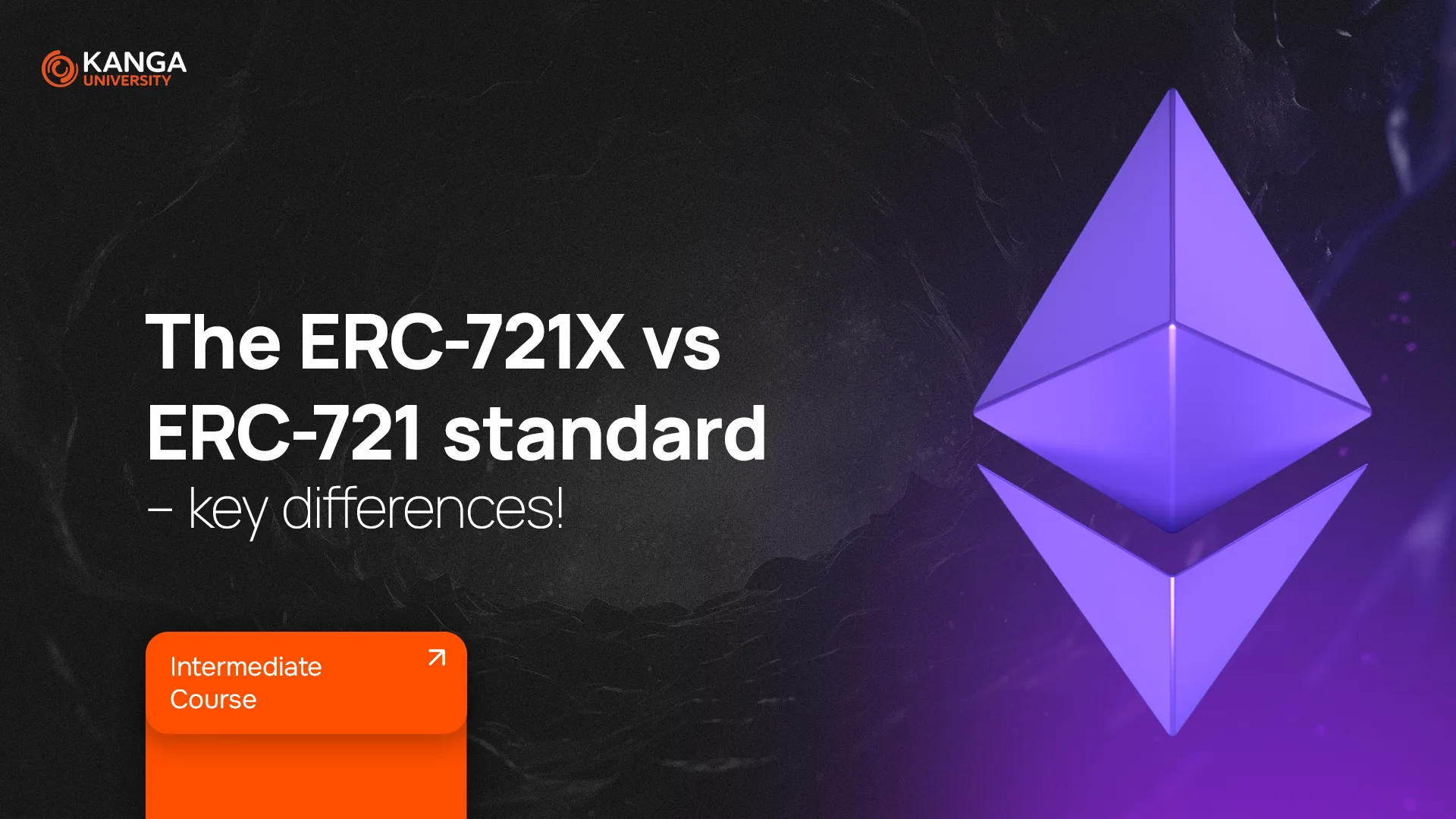
Non-fungible tokens (NFTs) are created within a blockchain ecosystem, and each must adhere to specific standards. These standards certify NFTs and confirm their authenticity.
Each NFT is generated using a smart contract, making it unique and easily identifiable. One of the most widely used standards for NFTs is ERC-721.
Recently, during the Bitcoin Ordinals boom, well-known Solidity developers CyberKongz and OwlofMoistness introduced an upgrade to this widely adopted standard. They developed ERC-721X, which enhances NFT security with multiple layers of protection. Let’s explore this innovation and how it differs from ERC-721.
What Does ERC Stand For?
ERC stands for Ethereum Request for Comments—a token standard on the Ethereum network that defines the developer interface for tokens in smart contracts. ERC standards are discussed by the Ethereum community on GitHub, and after approval from core developers and the broader community, they are implemented.
ERC defines essential token functionalities, such as:
- Transferring tokens between accounts
- Checking account balances
- Tracking the total supply of tokens in circulation
- Approving transactions
The most well-known ERC standard is ERC-20, which defines fungible tokens. Under ERC-20, every token generated within a specific contract is identical in type, value, function, and usability. This ensures a consistent structure for all ERC-20 tokens, making transferring, verifying, and approving transactions uniform across different tokens.
For example, sending ETH follows the same process as sending any ERC-20 token.
What Is ERC-721?
ERC-721 was a major upgrade over ERC-20 and was designed specifically for non-fungible tokens (NFTs). Unlike ERC-20 tokens:
- NFTs cannot be split—they must be transferred as a whole.
- Each NFT is unique, meaning its value and characteristics can differ within the same contract.
How is this possible?
Each NFT in ERC-721 contains a variable called uint256 tokenId, which assigns a unique identifier to each asset. This enables NFTs to store additional data, such as metadata, ownership history, and visual attributes.
ERC-721 was introduced in January 2018 by William Entriken, Dieter Shirley, Jacob Evans, and Nastassia Sachs.
What Is ERC-721X?
ERC-721X is a new extension of the ERC-721 standard that introduces batch transfers and multi-tasking token support while remaining fully backward-compatible.
This new token standard acts as a two-factor authentication (2FA) mechanism in the blockchain ecosystem, adding extra security layers to NFT ownership. With increasing threats in the crypto space, ERC-721X aims to safeguard NFT holders from scams and unauthorized transactions.
How? By assigning a secondary wallet as a “Guardian” that must authorize all NFT transfers, preventing unauthorized transactions.
How Does ERC-721X Work?
ERC-721X introduces two security layers: Locking and Protection.
1. Locking Mechanism
- Uses a Lock Registry that interacts with ERC-721 to lock and unlock NFTs.
- Locked NFTs cannot be transferred until they are removed from the registry.
- The locking process requires minimal gas fees.
The Lock Registry is designed with staking in mind, allowing assets to be used across multiple platforms without losing ownership.
2. Protection Mechanism
- Instead of locking NFTs in a single wallet, ERC-721X allows users to assign a secondary wallet as a “Guardian.”
- The Guardian wallet must approve transactions before an NFT can be transferred.
- This creates a two-step authentication process, making unauthorized transfers nearly impossible.
- For maximum security, the Guardian wallet should be a cold wallet (hardware wallet).
What Problems Does ERC-721X Solve?
Security is a major concern in the NFT space. Most users rely on hot wallets for convenience, but they are vulnerable to hacks and scams.
The Guardian Contract adds an extra layer of protection by requiring a secondary hardware wallet for transaction approval. This mitigates risks such as:
- Phishing attacks
- Social engineering scams
- Seed phrase theft
Implementing ERC-721X will drastically reduce the number of successful hacks, saving NFT holders from significant financial losses. NFT-related fraud has resulted in millions of dollars in stolen assets, so enhancing security is crucial.
Summary
The introduction of ERC-721X is a major step forward in Web3 security. More NFT projects are adopting this standard to enhance user protection.
Key Benefits of ERC-721X:
–Two-factor authentication for NFT transactions – The Guardian wallet prevents unauthorized transfers.
–Secure staking – The Lock Registry allows users to stake NFTs without risking ownership.
–Reduced fraud and hacking incidents – Requiring Guardian approval makes scams and phishing attacks much harder.
As the NFT market continues to grow, ERC-721X is set to become the new security standard for managing digital assets.